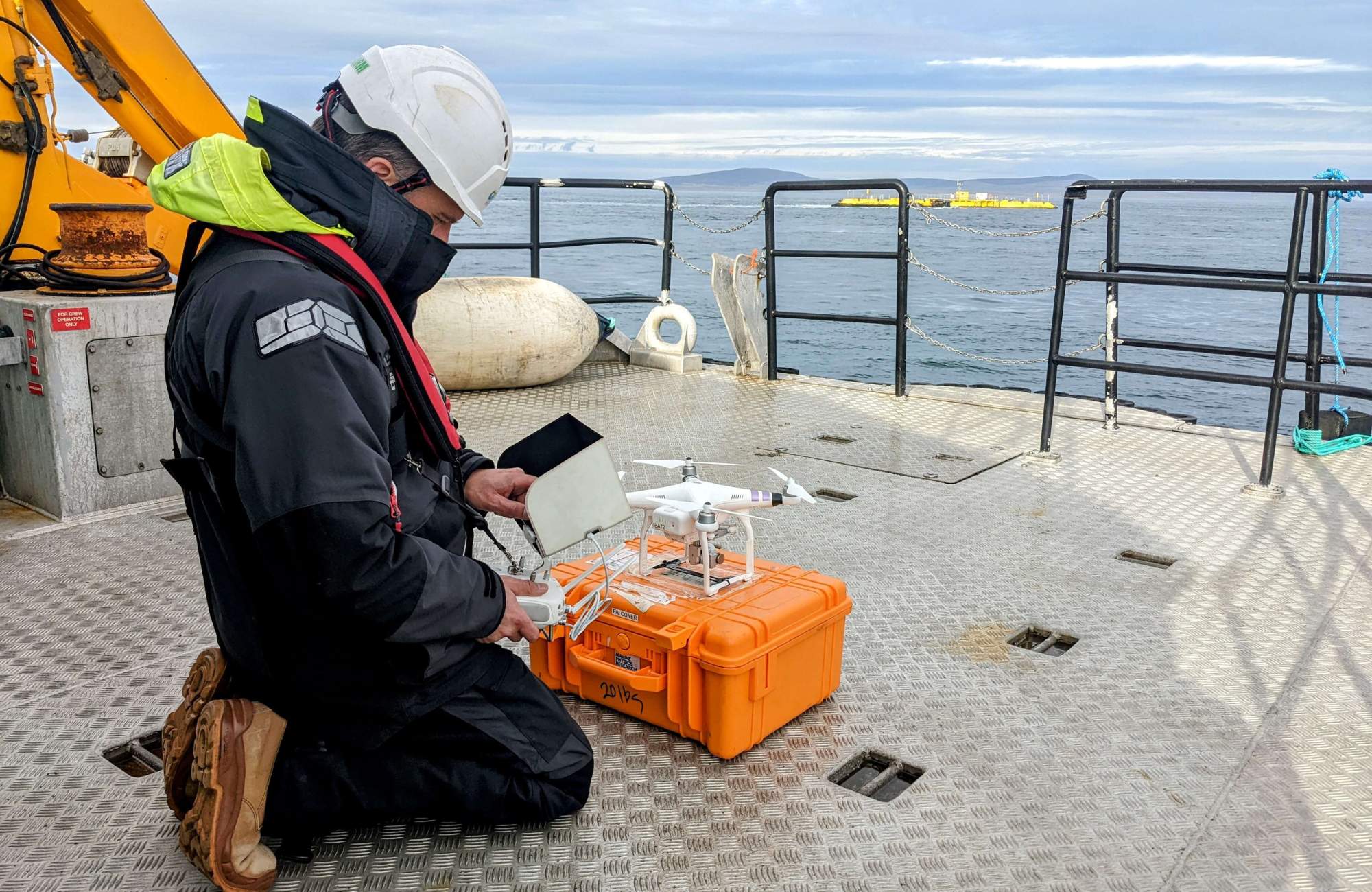While tidal power may stand out as the most predictable ocean energy source, the complexity of tidal currents still challenges reliable tidal stream energy extraction. Deployed in our most dynamic coastal seas, tidal turbines also prompt uncertainty regarding possible alterations to marine habitats and species. For instance, the novel application of aerial drones in these high-flow environments has already revealed that localised wakes from tidal turbines can generate predictable foraging opportunities for seabirds , with the wake mixing material through the water column, potentially acting like a prey conveyor belt Lieber et al. 2019.
To address the energy-environment nexus, NCCA partners are now applying systematic autonomous aerial drone surveys to obtain high-resolution measurements of surface flows around newly installed floating tidal turbines.

In combination with particle image velocimetry techniques (an optical method of flow visualization), these surveys offer unique insight on mean surface velocities, spanning turbulent surface signatures, wake propagation and associated velocity deficits downstream of devices. By directly characterizing surface flows, coastal drone surveys therefore directly complement traditional survey methods, such as submerged current profilers.
Furthermore, they enable safe access to measure surface flows in hazardous locations, allowing for assessments in the direct vicinity of ocean energy platforms—whether upstream or even over these platforms—particularly in strong flows exceeding 3 ms-1 where conventional instruments would be unsafe to use.
This research is being conducted by Prof Alex Nimmo-Smith at the University of Plymouth and Dr Lilian Lieber, Research Fellow at the Marine Biological Association.

Relevant publications:
Lieber, L., Nimmo-Smith, W.A.M., Waggitt, J.J. et al. (2019) Localised anthropogenic wake generates a predictable foraging hotspot for top predators. Commun Biol 2, 123. https://doi.org/10.1038/s42003-019-0364-z
Lieber Lilian, Langrock Roland and Nimmo-Smith W. Alex M. (2021) A bird’s-eye view on turbulence: seabird foraging associations with evolving surface flow features. Proc. R. Soc. B.2882021059220210592
http://doi.org/10.1098/rspb.2021.0592
Furthermore, they enable safe access to measure surface flows in hazardous locations, allowing for assessments in the direct vicinity of ocean energy platforms—whether upstream or even over these platforms—particularly in strong flows exceeding 3 ms-1 where conventional instruments would be unsafe to use.
This research is being conducted by Prof Alex Nimmo-Smith at the University of Plymouth and Dr Lilian Lieber, Research Fellow at the Marine Biological Association.

